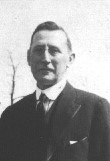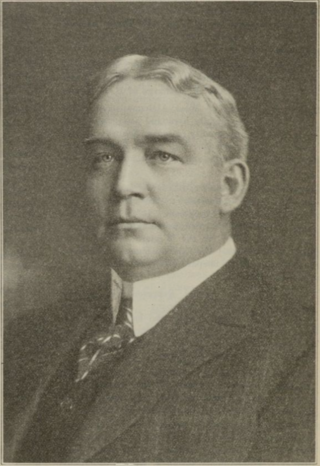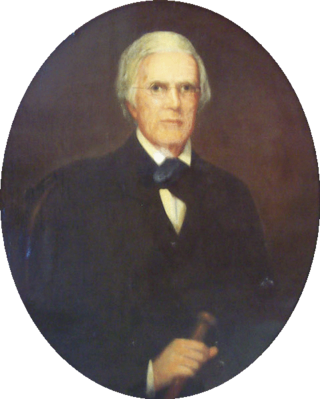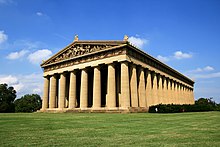
Bicentennial Capitol Mall State Park, commonly known as Bicentennial Mall, is an urban linear landscaped state park in downtown Nashville, Tennessee. The park is located on 19 acres (77,000 m2) north-northwest of the Tennessee State Capitol, and highlights the state's history, geography, culture, and musical heritage. Receiving more than 2.5 million visitors annually, it is the most visited of Tennessee's 56 state parks.

Mount Olivet Cemetery is a 206-acre (83 ha) cemetery located in Nashville, Tennessee. It is located approximately two miles East of downtown Nashville, and adjacent to the Catholic Calvary Cemetery. It is open to the public during daylight hours.

Centennial Park is a large urban park located approximately two miles west of downtown Nashville, Tennessee, United States, across West End Avenue from the campus of Vanderbilt University. The 21st-century headquarters campus of the Hospital Corporation of America was developed adjacent to the park.
Howard Cornelius Gentry Sr. was an American football coach. He was the 12th head football coach at Tennessee A&I State College—now known as Tennessee State University—in Nashville, Tennessee, serving for six seasons, from 1955 until 1960, and compiling a record of 42–10–1. Gentry as also the athletic director at Tennessee State from 1961 to 1976.
Edward Emmett Dougherty, a.k.a. Edwin Dougherty was an architect in the southeastern United States. One of his best known designs was the Tennessee War Memorial Auditorium in Nashville in 1922. The work won state and national design competitions.
Rogers Caldwell was an American businessman and banker from Tennessee. He was known as the "J. P. Morgan of the South." He was the founder and president of Caldwell and Company and its subsidiary, the Bank of Tennessee. He was the president of the Tennessee Hart-Parr Company, which sold tractors in the Southern United States, mechanizing agriculture, and the president of the Kentucky Rock and Asphalt company, which built infrastructure and roads in Tennessee. With his friend and business associate politician Luke Lea, he owned newspapers in Tennessee.

Percy Warner (1861–1927) was an American businessman from Nashville, Tennessee. He was active in public utility across the Southern United States.

William Crawford Smith was an American architect who served in the Confederate States Army during the American Civil War and in the United States Army during the Philippine–American War. He designed many buildings in Nashville, Tennessee, including Kirkland Hall, the first building on the campus of Vanderbilt University, and the Parthenon in Centennial Park.

Major Eugene Castner Lewis was an American engineer and businessman. He served as the chairman of the Nashville, Chattanooga and St. Louis Railway from 1900 to 1917. As a civic leader, he helped develop Shelby Park and Centennial Park, including the Parthenon, as well as Union Station.
Colonel Edmund William Cole was an American Confederate veteran and businessman. He was the president of the Nashville, Chattanooga and St. Louis Railway, and the founder of the American National Bank.

Whiteford Russell Cole was an American businessman. He was the president of the Louisville and Nashville Railroad from 1926 to 1934, and a director of many companies. During the railroad strike actions of 1921–1922, he threatened his workers with dismissal and loss of pensions. His mansion in Louisville, Kentucky is the official residence of the president of the University of Louisville.
Henry Gibel was a Swiss-born American architect. He designed many buildings in Tennessee, some of which are listed on the National Register of Historic Places.
Donald W. Southgate (1887–1953) was an American architect. He designed many buildings in Davidson County, Tennessee, especially Nashville and Belle Meade, some of which are listed on the National Register of Historic Places.

Burlington, also known as the Elliston-Farrell House, was a historic mansion on a plantation in mid-town Nashville, Tennessee, US. It stood on modern-day Elliston Place.

Joseph Thorpe Elliston was an American silversmith, planter and politician. He served as the fourth mayor of Nashville, Tennessee from 1814 to 1817. He owned land in mid-town Nashville, on parts of modern-day Centennial Park, Vanderbilt University, and adjacent West End Park.
William R. Elliston (1815–1870) was an American planter, slaveholder and politician. He served as a member of the Tennessee House of Representatives from 1845 to 1847. He owned Burlington Plantation in what is now Nashville, Tennessee. An investor in railroads and real estate, Elliston entered his horses in equestrian competitions. The former plantation property was later developed as modern-day Centennial Park, Vanderbilt University and West End Park.
David Jones was an African-American man who was lynched in Nashville, Tennessee on March 25, 1872 after being arrested as a suspect in a killing. He was mortally wounded while in jail, shot twice in the back while resisting white mob members who came to take him out; the whites pulled him into the Public Square and hanged him from a post outside the police station, with a crowd of an estimated 2,000 in attendance. The sheriff interrupted the hanging and took Jones down. Taken back to the jail, Jones died of his injuries on April 9, 1872.

Earl Simcox Swensson, FAIA was an American architect who was the founder of Earl Swensson Associates (ESA), an architectural firm based in Nashville, Tennessee. The firm has designed many notable buildings in Nashville, including the Batman Building, Centennial Medical Center and Opryland Hotel.

William Ridley Wills II is an American author and historian living in Nashville, Tennessee, who has authored 28 historical and biographical books as of 2021. He received the Tennessee History Book Award in 1991 for his first book, The History of Belle Meade: Mansion, Plantation and Stud. He is a past president of the Tennessee Historical Society and in 2016, was given an Honorary Doctor of Humane Letters from The University of the South. He is a former executive of a company founded by his grandfather, the National Life and Accident Insurance Company and was on the boards of trust of Vanderbilt University and Montgomery Bell Academy, a prep school for boys in Nashville.
The 1954 Tennessee A&I Tigers football team represented Tennessee Agricultural & Industrial State College as a member of the Midwest Athletic Association (MAA) during the 1954 college football season. In their fourth and final season under head coach Henry Kean, the Tigers compiled a 10–1 record, won the MAA championship, lost to North Carolina Central in the National Classic, and outscored all opponents by a total of 330 to 70.












